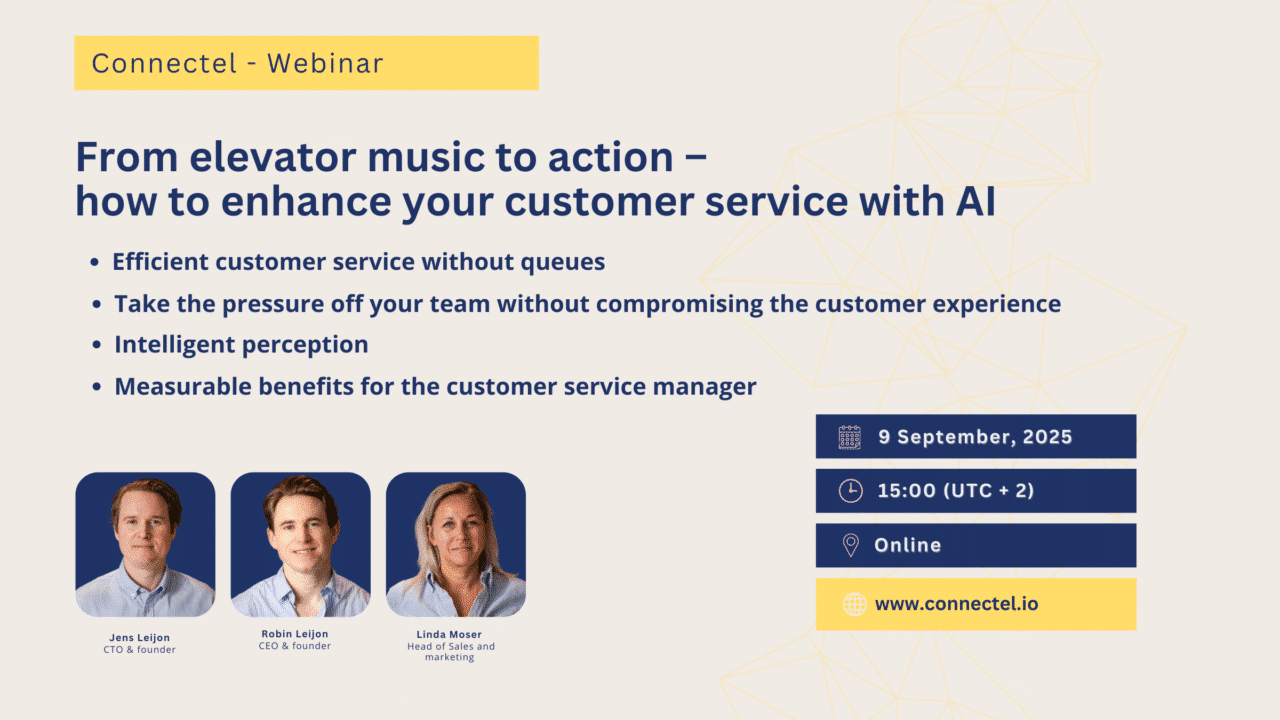
Optimizing the customer experience: Loyalty and satisfaction
Optimizing the customer experience
Delivering exceptional customer experiences not only enhances customer satisfaction, but also directly impacts customer retention and brand loyalty. But optimizing the customer experience can be tricky and feel overwhelming. In this article, we will guide you through the steps you need to take to enhance your CX offering.
Understanding customer experience optimization
First Before we go into the actual process, we just want to touch upon the term “customer experience optimization”, which refers to the process of continually improving every touchpoint a customer has with your brand. The goal is to exceed their expectations and create a positive emotional connection with your business. It involves aligning your organization’s people, processes, and technology to provide a seamless and delightful customer journey.
Mapping the customer journey
To optimize the customer experience, it is crucial to have a deep understanding of your customer’s journey. Start by mapping out each stage, from initial contact to post-purchase support. By visualizing the journey, you can identify pain points, areas of improvement, and opportunities to delight customers. A large part of change is identifying what works and what doesn’t, so don’t skip this step!
Collecting customer feedback
Customer feedback is a goldmine of insights that can help you understand where you stand in terms of customer experience. Utilize various channels, such as surveys, social media, and customer support interactions, to gather feedback. Actively listen to what your customers have to say, identify patterns, and prioritize areas that require attention.
Analyzing and acting on feedback
Collecting feedback is only the first step. To truly optimize customer experiences, you must analyze the feedback and take appropriate actions. Look for recurring themes, both positive and negative, and identify areas where you can make meaningful improvements. Regularly review customer feedback and update your strategies accordingly.
Empowering your customer service team
Your customer service team is on the frontline of customer interactions, making them crucial to delivering exceptional experiences. Invest in training and development programs to enhance their skills, knowledge, and empathy. Equip them with the tools and resources necessary to provide efficient and personalized support. Empowered agents can create memorable interactions that leave a lasting impression on customers.
Choose technology that helps you
Technology plays a significant role in optimizing customer experiences. Leverage customer service software that allows you to streamline workflows, automate repetitive tasks, and provide personalized support. Implementing a robust customer relationship management (CRM) system can help you centralize customer data, track interactions, and deliver consistent experiences across channels. However, don’t get caught up in buzzwords and trends. Look at the weaknesses in your contact center and find technology that helps improve the service you offer. If you have long queue times, a callback solution is helpful. If your customers aren’t interested in chatting with you, implementing a chatbot won’t increase the customer experience. Be strategic about the technology you choose to implement.
Personalization at scale
Customers expect personalized experiences tailored to their specific needs and preferences. Leverage the power of data and technology to deliver personalized interactions at scale. Utilize customer segmentation to create targeted marketing campaigns, offer personalized product recommendations, and provide proactive support based on individual preferences and behavior.
Collaboration across departments:
Customer experience optimization should not be limited to the customer service department alone. There needs to be collaboration and communication across all departments within your organization. Share customer insights, feedback, and success stories to create a customer-centric culture. Encourage cross-functional teams to work together to improve the overall customer experience.
Continuous improvement
Customer experience optimization is an ongoing process. Monitor key performance indicators (KPIs) such as customer satisfaction scores, Net Promoter Score (NPS), and customer retention rates. Set realistic goals and regularly assess your progress. Implement a culture of continuous improvement, where feedback is valued, and changes are made to enhance the customer journey.
Summary
Optimizing the customer experiences is vital for customer service managers to achieve customer satisfaction, retention, and loyalty. By mapping the customer journey, collecting and analyzing feedback, empowering your team, embracing technology, personalizing experiences, and fostering collaboration, you can make significant strides in delivering exceptional customer experiences. Remember, customer experience optimization is an ongoing journey, so consistently monitor, adapt, and improve to stay ahead in today’s competitive business landscape.


